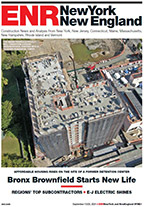IF YOU BUILD IT...
At the same time Watson was hatching his plan for Stadium Lofts, a much larger development was in the incubator.
Called 16 Tech because of its proximity to the city's 16th Street corridor and nearby life-science and pharmaceutical companies, the area's primary goal was to seize underused space near the stadium and create a mixed-use technology park that supports and capitalizes on the city's life-science economy.
Part of the problem, however, was the decrepit stadium, an obvious eyesore that stood out among the 170-acre development.
It didn't take long before the two proposals collided. As the city began discussing tearing down Bush Stadium, Watson's plan to reuse it fit well into the overall theme of 16 Tech.
"The tipping point for 16 Tech was Bush Stadium," reflects Kris Butler, deputy director of the Indianapolis Local Public Improvement Bond Bank, a city financing arm and the city's liaison for 16 Tech. "When John stepped up and said, 'I have a plan,' the city said, 'Yes, let's go for it.'"
Redeveloping the ballpark alone would have been a hard sell, adds Watson. "If you looked at the stadium by itself, it wouldn't make sense." In the context of 16 Tech, a project containing new housing in an area where little exists "starts to make sense because we become a catalyst and anchor for that development."
The master plan for 16 Tech, which is strategically located near several health care campuses, calls for 1 million sq ft of housing, research space and infrastructure improvements estimated to cost up to $300 million over the next two decades. Stadium Lofts, city officials say, encourages growth while preserving a key piece of the city's history.
A Building Within a Building
Stadium Lofts essentially fits within the footprint of the original building, an L-shaped structure whose two wings extend 132 ft and 264 ft, and are 74 ft deep.










